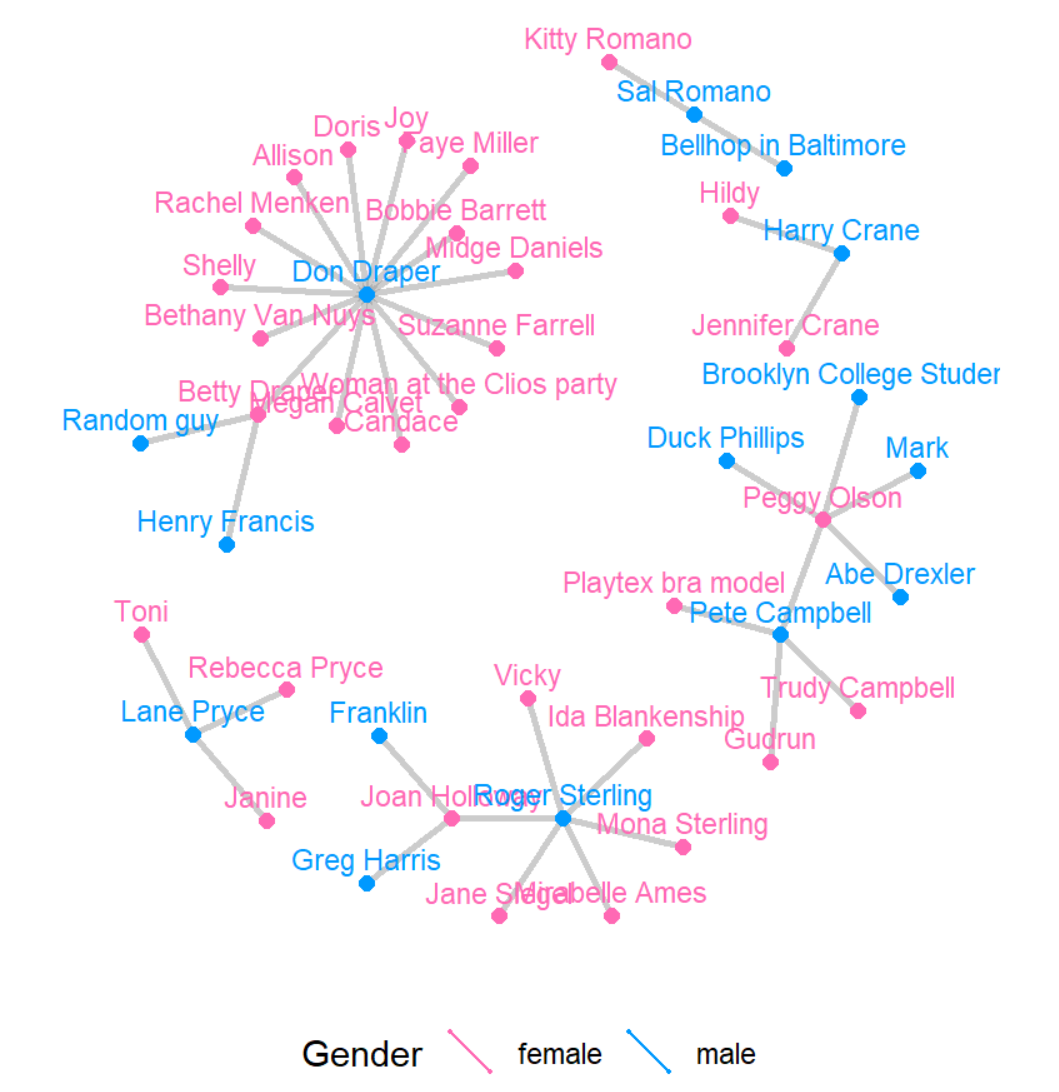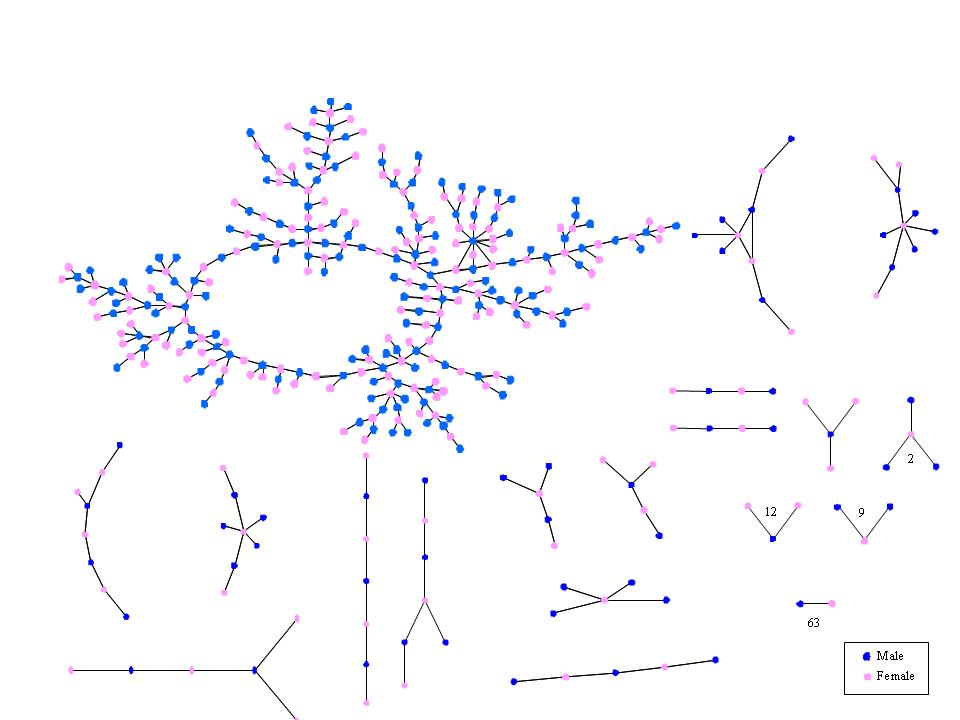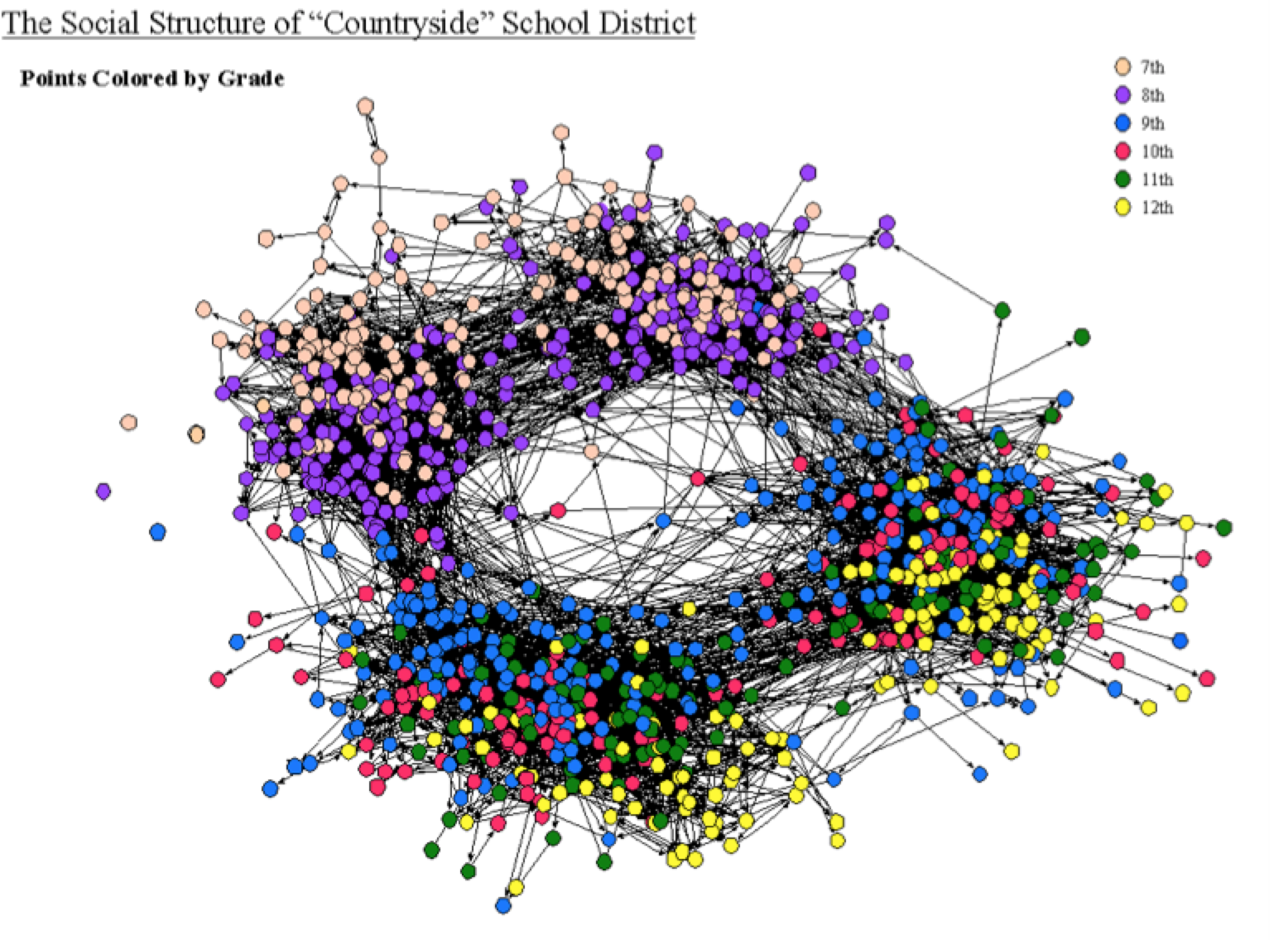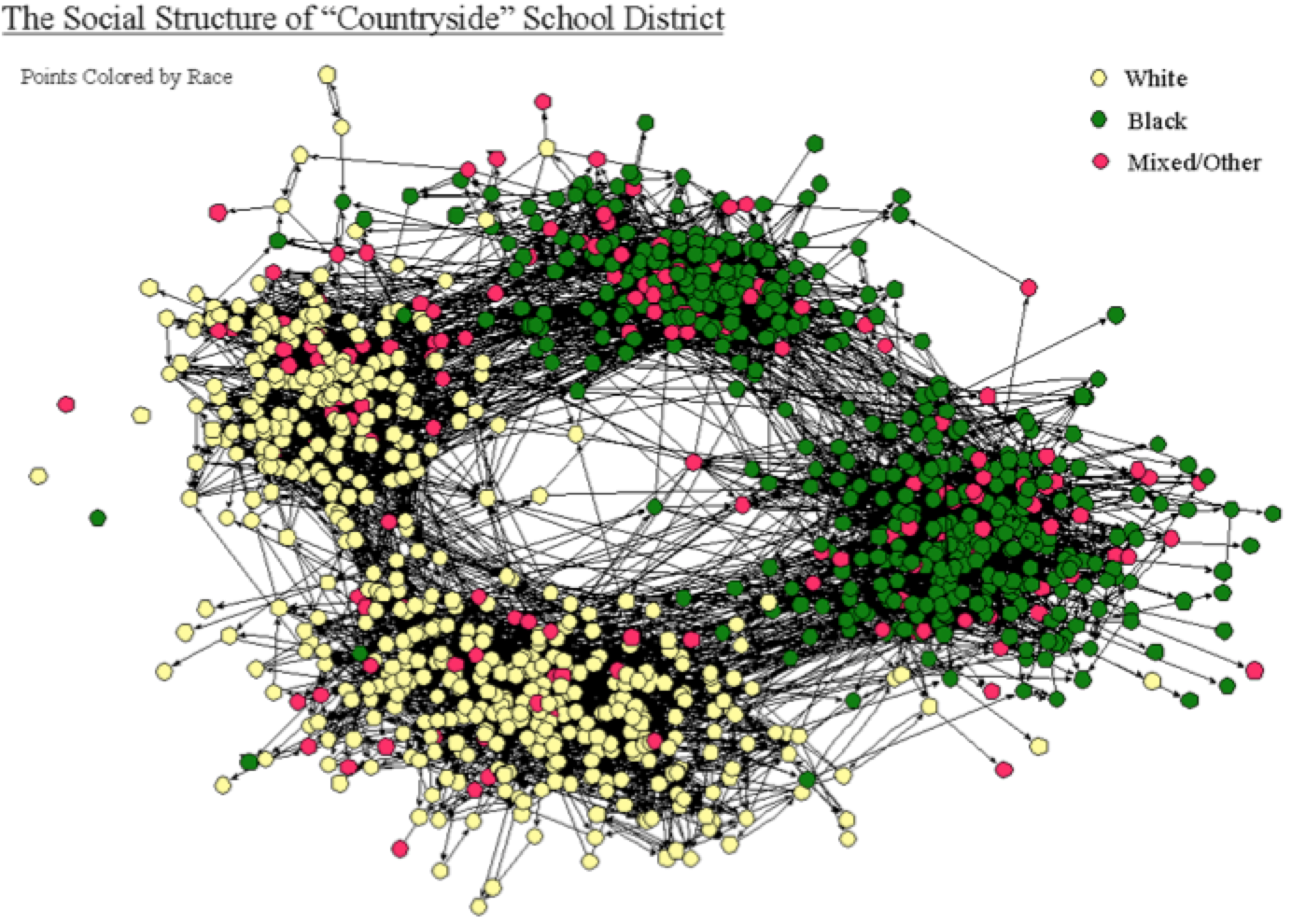POL 478H1 F
Intro to Network Analysis
Olga Chyzh [www.olgachyzh.com]
Today's Class
Network Analysis: an introduction
Definitions. What is network analysis?
Network features and measurements
Collecting/managing network data
Applications to Political Science
Network Visualization
What is a network (i.e., a graph)?
A set of nodes and relation(s) defined on them

Defining Network Features & Measurements: What's a node?
- A node can be defined as an entity that can form relations with other entities.
Synonyms:
- actor: from sociometry, common terminology in sociology and psychology
- vertex: from graph theory (i.e., math), common terminology in mathematics and physics
Term node is common in statistics and applied sciences outside of soc and psych.
Examples of Nodes
Individuals (Mad Men characters, legislators, terrorists)
Families
Organizations, Human Rights NGOs
Countries
Defining Network Features & Measurements: What's a relation?
- A relation/tie defines the existence of an attribute relating nodes.
Synonyms:
- link: common in computer science (e.g., huge lit on “Link Prediction”) and social sciences
- edge: graph theoretic terminology common in physics and math, but also elsewhere
Ties can have characteristics:
- Weight
- Qualitative attributes
- Direction
Exampesl of Ties
Romantic relationship, marriage, friendship
Business relationship
Cooperation/conflict
Network graphs can reveal important structures


Adolescent romantic and sexual networks
 Bearman, Moody and Stovel
Bearman, Moody and Stovel
Adolescent Social Structure by Jim Moody

Adolescent Social Structure by Jim Moody

Managing Network Data
You might begin with either a matrix or information stored separately about edges and nodes. This depends on your data collection strategy.
Useful terminology for working in R:
- Matrices: the adjacency matrix
- Edges: linkages between actors or nodes
- Vertices: nodes (or actors) in your system
Example: International Alliances 1914
Download the data here
Countries are nodes
Alliances are ties
defMat<-read.csv("https://raw.githubusercontent.com/ochyzh/POLS478/master/defmat1914.csv" , header=T)head(defMat)## name1 name2 ally## 1 AUH GUA 0## 2 AUH HON 0## 3 AUH SAL 0## 4 AUH NIC 0## 5 AUH ECU 0## 6 AUH UKG 0Your Turn (5 min)
Can you transform defAlly into a matrix form as shown below?
as.matrix(defMat)[1:20,1:20]## AUH BOL BUL COS ECU FRN GMY GRC GUA HON ITA JPN MNG NIC POR ROM RUS SAL## [1,] NA 0 1 0 0 0 1 0 0 0 1 0 0 0 0 1 0 0## [2,] 0 NA 0 0 0 0 0 0 0 0 0 0 0 0 0 0 0 0## [3,] 1 0 NA 0 0 0 1 0 0 0 0 0 0 0 0 0 0 0## [4,] 0 0 0 NA 0 0 0 0 0 0 0 0 0 0 0 0 0 0## [5,] 0 0 0 0 NA 0 0 0 0 0 0 0 0 0 0 0 0 0## [6,] 0 0 0 0 0 NA 0 0 0 0 0 0 0 0 0 0 1 0## [7,] 1 0 1 0 0 0 NA 0 0 0 1 0 0 0 0 1 0 0## [8,] 0 0 0 0 0 0 0 NA 0 0 0 0 0 0 0 0 0 0## [9,] 0 0 0 0 0 0 0 0 NA 0 0 0 0 0 0 0 0 0## [10,] 0 0 0 0 0 0 0 0 0 NA 0 0 0 0 0 0 0 0## [11,] 1 0 0 0 0 0 1 0 0 0 NA 0 0 0 0 0 0 0## [12,] 0 0 0 0 0 0 0 0 0 0 0 NA 0 0 0 0 0 0## [13,] 0 0 0 0 0 0 0 0 0 0 0 0 NA 0 0 0 0 0## [14,] 0 0 0 0 0 0 0 0 0 0 0 0 0 NA 0 0 0 0## [15,] 0 0 0 0 0 0 0 0 0 0 0 0 0 0 NA 0 0 0## [16,] 1 0 0 0 0 0 1 0 0 0 0 0 0 0 0 NA 1 0## [17,] 0 0 0 0 0 1 0 0 0 0 0 0 0 0 0 1 NA 0## [18,] 0 0 0 0 0 0 0 0 0 0 0 0 0 0 0 0 0 NA## [19,] 0 0 0 0 0 0 0 0 0 0 0 0 0 0 0 0 0 0## [20,] 0 0 1 0 0 0 1 0 0 0 0 0 0 0 0 0 0 0## SPN TUR## [1,] 0 0## [2,] 0 0## [3,] 0 1## [4,] 0 0## [5,] 0 0## [6,] 0 0## [7,] 0 1## [8,] 0 0## [9,] 0 0## [10,] 0 0## [11,] 0 0## [12,] 0 0## [13,] 0 0## [14,] 0 0## [15,] 0 0## [16,] 0 0## [17,] 0 0## [18,] 0 0## [19,] NA 0## [20,] 0 NAMake a Network Graph
library(igraph)pGraph <- graph_from_adjacency_matrix(as.matrix(defMat), weighted=NULL, mode="undirected", diag=FALSE) #convert to an igraph objectpGraph <- delete.vertices(pGraph , which(degree(pGraph)==0)) #remove isolatesV(pGraph)$color <- "turquoise"AllyPlot<- plot(pGraph, edge.arrow.size=.2, edge.color="black", vertex.frame.color="black", vertex.label=V(pGraph)$names, vertex.label.color="black", layout=layout_with_fr, edge.width=E(pGraph)$weight/5, edge.curved=.08, vertex.size=30)Make a Network Graph
